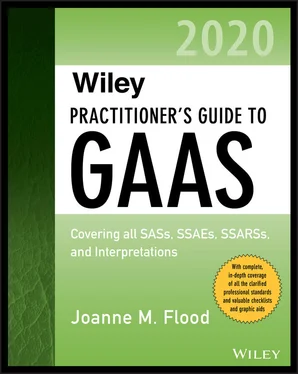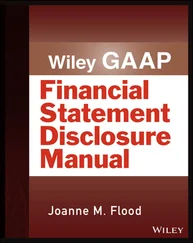For example, information in the sales system could be used to:
Calculate bonuses to salespeople, an amount that is reported in the financial statements.
Generate a key performance indicator, which management uses to identify anomalies in the accounting records or financial statements.
Generate nonfinancial information, which management uses in its monitoring process.
General controls related to nonfinancial systems may be included in management’s evaluation if the risk of failure of the control is significant. If the risk is small, then the system can be excluded from the scope of the evaluation.
General Controls Directly Related to Financial Information
Other IT systems at an organization are directly related to the processing of financial information; these systems include the accounting system, the sales system, or the inventory management system. To the extent that these systems process significant financial information where a material misstatement could occur, they will be included within the scope of the auditor’s evaluation.
IT systems that have a more direct effect on the financial reporting process typically are included within the scope of management’s evaluation. Relevant IT general control objectives usually relate to:
Logical access to programs and data
Physical access to computer hardware and the physical environment within which the hardware operates
System development and change
Effect on the internal audit function
The following questionnaire will help the auditor assess risk. The existence of a condition covered by the questionnaire does not mean errors or fraud have occurred; it is a warning sign indicating increased risk in the audit areas affected. The questionnaire should be modified in accordance with the size and complexity of the entity.
Illustration 1. Risk Assessment Questionnaire

[ Client ]

[ Audit date ]
 [ Prepared by/Date ] [ Prepared by/Date ] |
 [ Reviewed by/Date ] [ Reviewed by/Date ] |
Instructions
The purpose of this questionnaire is to document and assess audit risk. It should be part of audit planning and updated during the audit. (AU-C 260.15)
The information required to complete this questionnaire comes from the following sources:
1 Client responses to our inquiries
2 Our knowledge of general and industry economic conditions
3 Our knowledge of the client
This questionnaire is divided into two major sections: external and internal factors. It is designed so that every “Yes” answer adversely affects risk exposure.
For every “Yes” answer, the item should be referenced to the appropriate audit documentation. The audit documentation should state our assessment of the effect of the condition on the risk of material errors or fraud.
External Factors
|
Yes |
No |
Working paper reference |
| General Economic and Financial ConditionsAre there trade or other barriers to the client’s international business?Have the client’s domestic markets suffered from high unemployment?Have the client’s domestic markets suffered from high inflation?Has legislation passed that adversely affects the client?Are interest rates high in relation to the client’s capital needs?Has the client’s business been adversely affected by changes in the following:Interest rates?Unemployment rates?Money supply?Foreign currency exchange rates?Overall business conditions (depression, recession, inflation)? |
|
|
|
| Industry Economic and Financial ConditionsAre the products of this industry subject to rapid obsolescence?Is the industry highly competitive?Have there been an unusual number of bankruptcies in this industry?Does the estimated income for the year deviate significantly from the industry average?Did the industry experience a strike or other labor unrest? Uses and Users of Financial StatementsWill the financial statements be filed with the SEC?Will the financial statements be submitted to the client’s bank?Will the financial statements be submitted to credit agencies?Will the financial statements be submitted to stockholders?Will the financial statements be submitted to employees with reference to:Profit-sharing plans?Pension plans?Bonus arrangements?Other compensation arrangements?Will the financial statements be used in connection with negotiations relating to an acquisition or a disposal of a business or a segment of a business?Will the financial statements be used in connection with negotiations for:A loan?A performance bond?Private sale of stock?Are there other uses or users of these financial statements that may affect our risk? If so, list. |
|
|
|
Internal Factors
|
Yes |
No |
Working paper reference |
| Management’s IntegrityAre there any indications that management may lack integrity?Does management desire favorable company earnings because of the following:Need to meet forecasts?Need to support the price of the entity’s stock?Existence of management profit-sharing agreements?Does management desire low company earnings to reduce income taxes?Is management dominated by one or a few individuals?Does management have a poor reputation in the industry?Does management have a reputation for taking unusual or unnecessary risks?Has there been considerable turnover in senior management positions?Are there other characteristics of management personnel that may affect our risk? If so, list. Entity OrganizationDoes the entity lack an audit committee?Does the entity fail to document its accounting system?Does the entity fail to use the internal audit function?Does the internal audit function, if any, not report to the audit committee or some other high organizational level of the entity?Is the organization owner- or manager-dominated?Does the entity fail to document job requirements?Does management lack an understanding of accounting and administrative controls?Does management fail to implement accounting and administrative controls?Has management failed to correct material weaknesses in internal accounting control that can be corrected?Are the entity’s records generated to a significant degree by an electronic data processing (EDP) system?Does the entity fail to maintain perpetual records of:Inventories?Long-lived assets?Investments?If the entity maintains perpetual records, does it fail to periodically compare them with physical counts?Does management fail to communicate to other personnel a commitment to control?Does the entity fail to maintain policy and procedures manuals?Is there a high turnover of accounting and finance personnel?Has the client recently changed auditors or attorneys?Does a hostile relationship exist between our staff and management?Has the client recently organized or acquired a subsidiary? Financial Condition of EntityDoes the entity have insufficient working capital?Does the entity have insufficient lines of credit?Does the entity depend on relatively few customers?Does the entity depend on relatively few suppliers?Are there violations of debt covenants?Has the entity recently experienced a significant period of losses?Is the entity using short-term obligations to finance long-term projects?Does the entity have excess productive capacity?Does the entity have high fixed costs?Has the entity experienced rapid expansion?Does the entity have a significantly long operating cycle?Does the entity have significant contingent liabilities?Is the entity the defendant in any significant litigation?Do major valuation problems exist, such as:Allowance for doubtful accounts?Inventories?Investment?Long-term construction contracts?Has the client experienced severe losses from investments or joint ventures? Nature of TransactionsDoes the entity engage in a significant number of consignment purchases or sales?Does the entity engage in significant cash transactions?Does the entity engage in significant related-party transactions?Has the entity engaged in significant unusual transactions during the year or near the end of the year?Are there any questions on the timing of revenue recognition? |
|
|
|
Illustration 2. Example Control Objectives
Читать дальше



 [ Prepared by/Date ]
[ Prepared by/Date ] [ Reviewed by/Date ]
[ Reviewed by/Date ]










